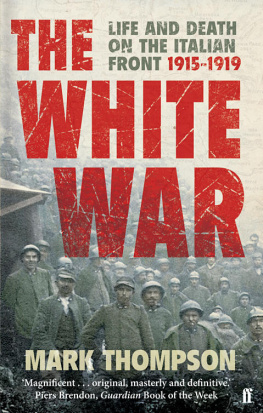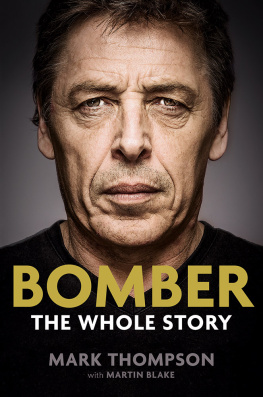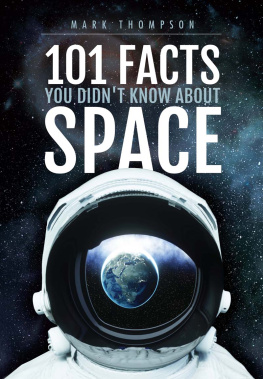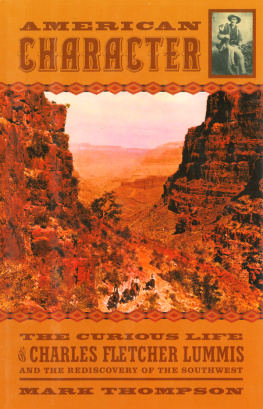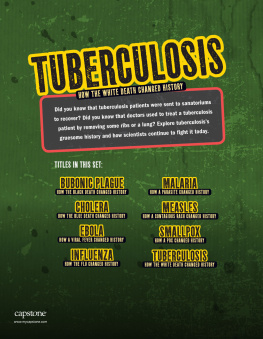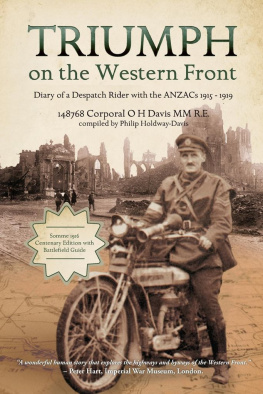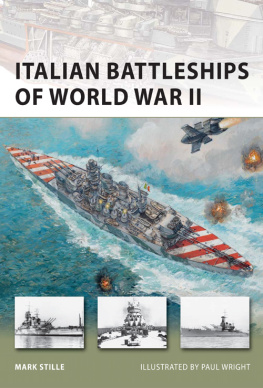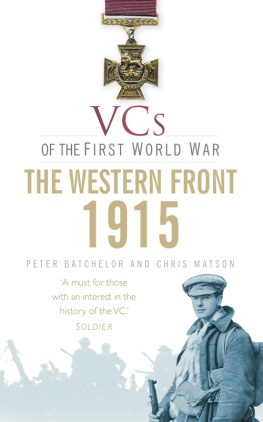Mark Thompson - The white war: life and death on the Italian front, 1915-1919
Here you can read online Mark Thompson - The white war: life and death on the Italian front, 1915-1919 full text of the book (entire story) in english for free. Download pdf and epub, get meaning, cover and reviews about this ebook. year: 2009, publisher: Basic Books, genre: History. Description of the work, (preface) as well as reviews are available. Best literature library LitArk.com created for fans of good reading and offers a wide selection of genres:
Romance novel
Science fiction
Adventure
Detective
Science
History
Home and family
Prose
Art
Politics
Computer
Non-fiction
Religion
Business
Children
Humor
Choose a favorite category and find really read worthwhile books. Enjoy immersion in the world of imagination, feel the emotions of the characters or learn something new for yourself, make an fascinating discovery.
- Book:The white war: life and death on the Italian front, 1915-1919
- Author:
- Publisher:Basic Books
- Genre:
- Year:2009
- Rating:5 / 5
- Favourites:Add to favourites
- Your mark:
- 100
- 1
- 2
- 3
- 4
- 5
The white war: life and death on the Italian front, 1915-1919: summary, description and annotation
We offer to read an annotation, description, summary or preface (depends on what the author of the book "The white war: life and death on the Italian front, 1915-1919" wrote himself). If you haven't found the necessary information about the book — write in the comments, we will try to find it.
The white war: life and death on the Italian front, 1915-1919 — read online for free the complete book (whole text) full work
Below is the text of the book, divided by pages. System saving the place of the last page read, allows you to conveniently read the book "The white war: life and death on the Italian front, 1915-1919" online for free, without having to search again every time where you left off. Put a bookmark, and you can go to the page where you finished reading at any time.
Font size:
Interval:
Bookmark:
For Noel, George, and Sanja
in time and always
Prime Minister Antonio Salandra
Baron Sidney Sonnino
Gabriele DAnnunzio (ArchivioFotografiestorichedella grandeguerra dellaBibliotecacivica Villa Valle,Valdagno, image no. 0087)
Benito Mussolini in 1915 (Mary Evans Picture Library)
General Cadorna visiting British batteries in spring 1917 (MuseoStorico Italiano della Guerra, Rovereto, photo no. 8/2892)
Mount Mrzli (MSIG, 94/19)
Austro-Hungarian troops on the Carso
View from Mount San Michele to Friuli
Trieste and its port in 1919
A farming family in Friuli
Approaching Gorizia
View from Mount San Michele to the River Isonzo
The relief
Mount Tofana and the Castelletto (MSIG, 121/45)
Italian second-line camp
The road of heroes on Mount Pasubio (MSIG, 124/98)
Infantry attack on the Carso, 1917 (Imperial War Museum, London,image no. Q 115175)
Boccionis Unique Forms of Continuity in Space (1913) (Tate,London)
Italian first line on the southern Carso, 1917 (IWM, HU 97058)
Emperor Karl and General Boroevi (By courtesy of SergioChersovani, Gorizia)
Italian wounded below Mount San Gabriele
Bosnian prisoners of war (IWM, HU 89218)
Panoramic view of the Isonzo valley and Mount Krn (MSIG, 94/19a)
Italian dead at Flitsch, 24 October 1917 (IWM, Q 23968)
Third Army units retreating to the River Piave, early November 1917 (MSIG, 2/450)
Italian prisoners of war (IWM, Q 86136)
Italian cavalry crossing the River Monticano (MSIG, 107/240)
Entering Gorizia, November 1918
The Big Four in Paris, 1919 (Mary Evans Picture Library)
The Adriatic Sea, from the edge of the Carso
References refer to the books from which the quotations have been taken as listed in the bibliography, and can be found at the end of each chapter.
Some of the most savage fighting of the Great War happened on the front where Italy attacked the Austro-Hungarian Empire. Around a million men died in battle, of wounds and disease or as prisoners. Until the last campaign, the ratio of blood shed to territory gained was even worse than on the Western Front. Imagine the flat or gently rolling horizon of Flanders tilting at 30 or 40 degrees, made of grey limestone that turns blinding white in summer. At the top, Austrian machine guns are tucked behind rows of barbed wire and a parapet of stones. At the bottom, Italians crouch in a shallow trench. The few outsiders who witnessed this fighting believed that Nobody who hasnt seen it can guess what fighting is needed to go up slopes [like these].
This front ran the length of the ItalianAustrian border, some 600 kilometres (almost 400 miles) from the Swiss border to the Adriatic Sea. On the high Alpine sectors, the armies lived and fought in year-round whiteness. As on other fronts, the armies were separated by a strip of no-mans land. Peering at a field cap bobbing above the enemy trench, an Italian soldier reflected on the conditions that made the carnage possible:
If the anonymity was mutual, so was the peril. Better than anyone in the world, the enemy who wants to kill you knows your anguish. The deafening preliminary barrage, the inconceivable tension before zero hour, the pandemonium of no-mans land: trench assaults did not vary much in the First World War. Likewise, the patterns of collusion which made life more bearable between the battles shooting high, staging fake raids, respecting tacit truces to fetch the wounded and bury the dead, even swapping visits and gifts.
Another kind of collusion was so rare that very few instances were recorded on any front. It happened when defending units spontaneously stopped shooting during an attack and urged their enemy to return to their line. On one occasion, the Austrian machine gunners were so effective that the second and third waves of Italian infantry could hardly clamber over the corpses of their comrades. An Austrian captain shouted to his gunners, What do you want, to kill them all? Let them be. The Austrians stopped firing and called out: Stop, go back! We wont shoot any more. Do you want everyone to die?
Italian veterans described at least half a dozen such cases. In an early battle, the infantry tore forward, scrambling over the broken ground, screaming and brandishing their rifles. The Austrian trench was uncannily silent. The Italian line broke and clotted as it moved up the slope until there were only groups of men hopping from the shelter of one rock to the next, like toads. Then a voice called from the enemy line: Italians! Go back! We dont want to massacre you! A lone Italian jumped up defiantly and was shot; the others turned and ran.
A few weeks earlier, in September 1915, the Austrians urged the survivors of an Italian company to stop fighting and go back to their own line, taking their wounded, or they would all die. You can see there is no escape! Eventually the Italians gave up, and the Austrians hurried down with stretchers and cigarettes. The Italians gave them black feathers from their plumed hats and stars from their collars as souvenirs. A year later, a Sardinian battalion attacked positions on the Asiago plateau where, unusually, no-mans land sloped downhill towards the Austrians. As the Italians stumbled over boulders, the enemy machine gunners had to keep adjusting their elevation; this saved the battalion from being wiped out. As the survivors drew close to the enemy trench, an Austrian shouted in Italian: Thats enough! Stop firing! Other Austrians looking over the parapet took up the cry. When the shooting stopped, the first Austrian, who might have been a chaplain, called to the Italians: You are brave men. Dont get yourselves killed like this.
If there is any proof that such scenes were played out on other fronts, I have not found it. A Turkish officer may have shouted to the Australians attacking The Nek in August 1915 during the Gallipoli campaign, telling them to go back. Even if he did so, the Turkish machine gunners kept shooting and the Australians kept dying. The following month, German machine gunners may eventually have stopped firing on Hill 70, in the Battle of Loos, when the British columns offered such a target as had never been seen before, or even thought possible. The incidents reported on the Italian front went further than this. To take their measure, bear in mind that there was no shortage of hatred on this front, that soldiers could relish the killing here as much as elsewhere, the Austrians were outnumbered and fighting for their lives, and any officer or soldier caught assisting the enemy in this way would face a court martial.
These deterrents could be overcome only by the spectacle of a massacre so futile that pity and revulsion forced a recognition of oneself in the enemy, thwarting the habit of discipline and the reflex of self- interest. Half a dozen cases over three years might not mean much if other fronts had thrown up examples of the same thing. As it is, they suggest that courage, incompetence, fanaticism and topography combined on this front to create conditions unlike any others in the Great War, and extreme by any standard in history. This is the story of those conditions.
Font size:
Interval:
Bookmark:
Similar books «The white war: life and death on the Italian front, 1915-1919»
Look at similar books to The white war: life and death on the Italian front, 1915-1919. We have selected literature similar in name and meaning in the hope of providing readers with more options to find new, interesting, not yet read works.
Discussion, reviews of the book The white war: life and death on the Italian front, 1915-1919 and just readers' own opinions. Leave your comments, write what you think about the work, its meaning or the main characters. Specify what exactly you liked and what you didn't like, and why you think so.

